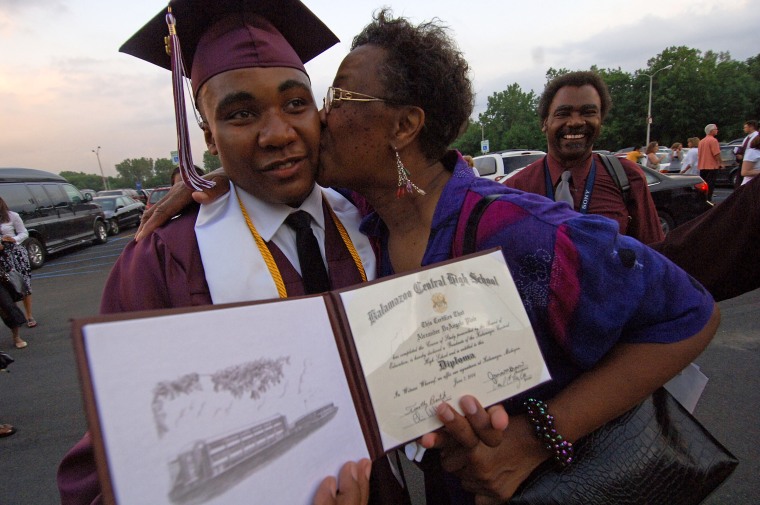Stephanie Butler thought her dream of following her father’s path to Michigan State University was impossible, but the Kalamazoo Promise is making it happen.
As a member of the 2006 graduating class, Butler will be among the first beneficiaries of the Kalamazoo public school district’s pioneering free tuition program, announced last fall and funded by anonymous private donors.
“The Kalamazoo Promise came along and kind of opened up options,” said Butler, president of her school’s drama club, a two-year member of the National Honor Society and the organizer of a school-sponsored community blood drive.
The program provides scholarships to any student who has attended Kalamazoo Public Schools for four years or more and lives in the district. The program will distribute an estimated $2 million to $3 million its first year to about 310 of the 380 eligible graduates, according to Executive Administrator Bob Jorth.
The remaining students are attending out-of-state or private colleges, joining the military, attending college later or have applications that are still pending.
The scholarships cover 65 to 100 percent of a student’s tuition for four years at public colleges and universities in Michigan. The percentage is calculated on a sliding scale, based on when the student entered the school district. About four out of every 10 of the district’s graduates are receiving full-tuition scholarships, Jorth said.
Flexibility within state
As one of the top 20 students in her senior class — Butler earned a 3.95 grade-point average — the 18-year-old automatically qualified for a full, four-year academic scholarship to Western Michigan, a state school in Kalamazoo.
But she wanted to attend Michigan State, as her father, Patrick Butler, 57, did more than three decades ago.
Patrick Butler, a deputy fire chief in Kalamazoo County’s Kalamazoo Township, had always nudged her toward Michigan State. After the Promise program was announced, they traveled to East Lansing to explore the campus.
A Michigan State freshman seminar she’s taking in July includes a trip to Ireland.
“It is an opportunity for Stephanie to experience things above four years of college credit,” said her mother, Nancy Butler.
An account the Butlers established for Stephanie and their other daughter, Christie, 20, doesn’t have enough money to pay for a four-year education at Michigan State.
But combining that money with the various scholarships Stephanie Butler has earned and the Promise, which will cover 65 percent of her tuition, means she won’t have to find any extra money for school.
Stress relief for another family
Alex Plair II, who graduated from Central High School on Wednesday evening, has been a district student since kindergarten. The scholarship program will cover 100 percent of his Western Michigan tuition.
Plair, 17, had a 3.56 GPA, earned all-conference honors in football and won statewide awards for his inventions while at Central. He plans to major in construction engineering or civil engineering, and rejected a four-year, $20,000 scholarship offer from Indiana Tech to take advantage of the Promise.
His father and mother, Alex and Pat Plair, have five girls and one boy. Four of their daughters were in college during the 2005-06 school year. All of them paid for school with a patchwork of partial scholarships, grants, loans and part-time jobs.
“It’s a great blessing and I know it’s going to help my parents out a lot, take some stress off of them and just help me out,” Plair said.
